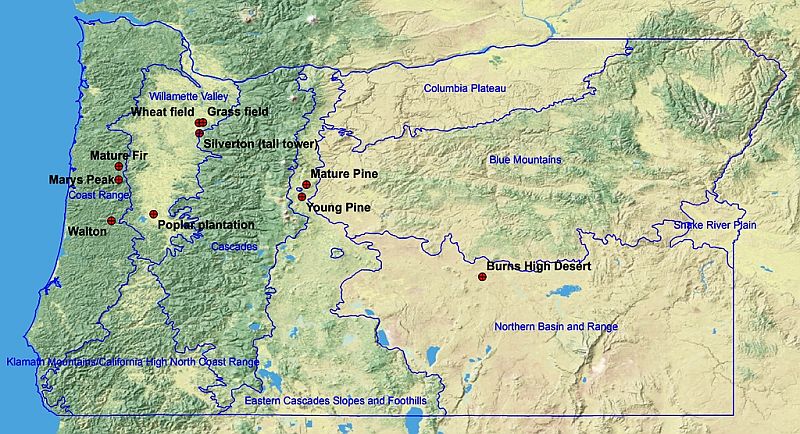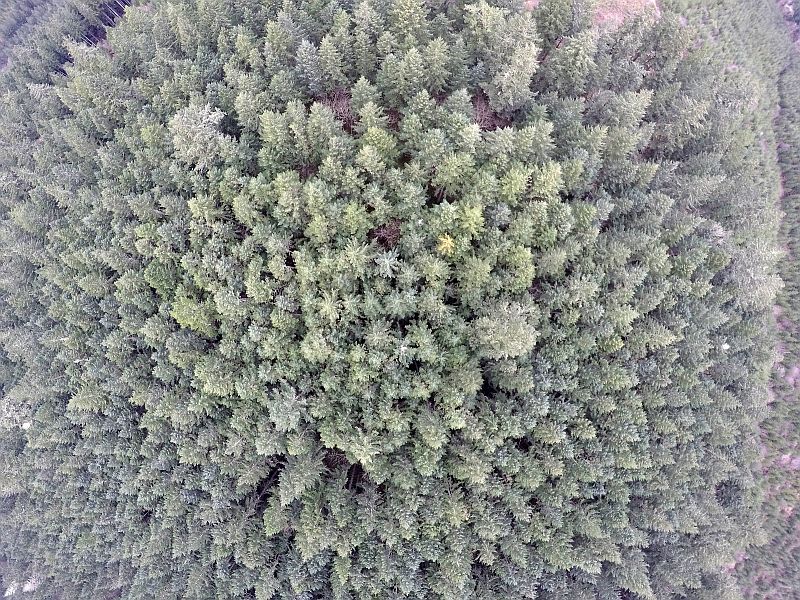We aim to improve our understanding of global change in terrestrial ecosystems using multi-scale observations, including AmeriFlux measurements, inventories, atmospheric CO2 observations, remote sensing data, and models to study the feedbacks between terrestrial ecosystems and climate.
We have an ongoing research program in the western US supported by NOAA and DOE. We are improving representation of terrestrial processes, such as carbon allocation in forests and drought-induced mortality in the Community Land Model (CLM4.5), the land model portion of the Community Earth System Model (CESM 1.2) (DOE support).
We are currently working on:
- Improving representation of terrestrial biogeochemical processes in climate-carbon models.
- Evaluating mitigation measures intended to reduce forest crown fire risk, drought stress, and provide wood for bioenergy under future climate change projections to determine feedbacks to climate using CLM4 and Life Cycle Assessment.
- Using atmospheric observations and AmeriFlux data to constrain and diagnose several terrestrial models and understand causes of variability in carbon cycling (e.g. BioFlux, NCAR’s CLM4.5).
We use atmospheric observations of CO2 in inverse modeling to better understand causes of variability in carbon cycling. We are developing a data assimilation approach that combines data from various sources and advanced statistics to constrain and diagnose simulated terrestrial carbon processes using several process models (e.g. BioFlux, CLM4) (NOAA support). We established a ground-based network of CO2 observation sites in Oregon to create a relatively data-rich environment in a confined region with incoming air from the Pacific Ocean and pronounced surface flux heterogeneity that can serve as a test bed for larger scale applications. These data are submitted to CarbonTracker.

Oregon TERRA-PNW research sites

Coast Range understory

Clouds moving over the Coast Range

Douglas fir in the Coast Range